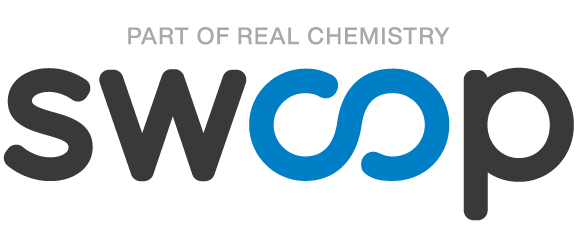The medical marketing world is giving up on normal — but not for the reasons one might expect.
While 2021 started with great expectations for post-pandemic, post-vaccine adjustments, the Delta and Omicron variants had other ideas. By mid-year, many of those well-thought-out hybrid sales and marketing plans landed on the scrap heap. Meanwhile, the roller coaster of infection rates convinced many of pharma’s sales and marketing pros that the pandemic status quo (read: exhausted healthcare professionals and disrupted conferences) isn’t likely to be upended anytime soon.
But even if the MM+M/Swoop 2022 Healthcare Marketers Survey shows that industry marketing spend still lags 2019 levels, it also highlights the significant strides companies are taking to futurize their businesses and brands. Indeed, pharma, biotech and medical device execs say they are leaning differently on their demand-generation levers — and, as a result, they are genuinely excited about growth possibilities in the year ahead.
Most people in the pharmaceutical universe keep their eyes on the megatrends, rubbernecking at the expense disclosures of the publicly held giants. It’s thus illuminating to know that Johnson & Johnson’s selling and marketing expenses nudged upward by 1% to $7.95 billion last year, while Pfizer’s spiked 10% to $4.1 billion.
But all those zeros can obscure the nitty-gritty reality of most marketing execs’ daily lives, especially as they wrangle the most out of budgets allocated at the brand level. That’s where the venerable MM+M/Swoop survey comes in.
This year’s Healthcare Marketers Survey reveals that 2021 budgets rose 15% to $8.3 million, compared to $7.2 million in 2020. Yes, that means budgets are well below the $12.5 million reported in 2019, but it also shows that marketers are cannier about digital investments and willing to build more flexible media plans. And they are well aware they have a front-row seat to observe the fast-changing role of healthcare providers, who comprise their most important customer base.
“We’ve shifted to more nonpersonal promotion in order to communicate with our customers,” says Medexus Pharma VP of marketing Brian Peters in response to emailed questions. “We’ve utilized a variety of digital tools to engage more effectively, and we’ve also increased the size of our inside sales team to reach additional customers on a more frequent basis.”
In fact, nearly 40% of respondents are funneling more money into nonpersonal promotion, splitting funds more or less equally on different ways to help sales reps and boosting non-rep-delivered digital tactics.
Our respondents have a lot on their minds. When asked about their employers’ biggest challenges, the economy and pressure from payers emerged as the most significant concerns. Those were closely followed by the pandemic’s continued impact on the healthcare system. More than half of respondents believe that smaller launch budgets, disrupted launches, FDA regulations, delivering innovations beyond the pill and communicating about COVID-19 vaccines pose significant problems to the industry.
But they see plenty of opportunities ahead, too. They’re especially bullish on patient engagement programs, drugs currently in the developmental pipeline and the increasing speed of clinical development.
This year’s survey draws from a sample of 93 individuals currently employed by pharma, biotech and medical device companies, most of them serving as chief marketing officers, directors or brand managers. About 56% work in the pharmaceutical realm, 26% in medical devices or diagnostics and 18% in biotech. While 23% say their budget is devoted to a single brand, 43% oversee a budget that supports up to four brands.
While 32% are solely responsible for their marketing budget, most work closely with others to determine brand priorities. Typically, that includes sales and commercial operation teams (43%), marketing centers of excellence and others in the C-suite (both 16%) and medical affairs (10%.)
They also represent companies big and small: 32% work at organizations with annual revenue more than $1 billion, 43% at firms with annual revenue less than $500 million and 25% at companies with annual revenue between $500 million and $1 billion.
Not surprisingly, sales reps account for the biggest slice of channel spending, averaging roughly 15% of the average budget. Yet as medical facilities limit their access, reps may be perceived as less effective, with 29% of respondents cutting back on their rep budget this year.
Paid digital is the next largest line in the budget at 12%, followed by content marketing at 9% and social media, websites and microsites at 8%. Less of a consideration are paid traditional TV and video/non-linear TV, both at 5%. It’s worth pointing out that the majority of respondents, 58%, opted not to use any paid traditional media — no TV, print or radio.
Conversely, 28% of respondents spent more on paid digital advertising, while only 10% reduced spending. Search engine optimization is also rising, with 29% upping their expenditures.
Healthcare marketers are also getting faster on their feet, with 32% saying they’ve had to revise or relaunch existing campaigns in the last year. Mostly that’s due to COVID-19 and its exasperating variants — not surprisingly, the culprit in 70% of these disruptions — but access issues, underperformance and new brand leaders also sparked course corrections.
Brands have also evolved the way they partner with outside experts. Just less than 30% of respondents are using their marketing agencies of record more than they did in the prior year; 18% are relying more heavily on consultancies.
For this particular group of marketers, no audience matters as much as healthcare providers, to whom 53% of budgets are devoted. Yet respondents are also aware that this audience may be even more fractured than it was at the pandemic’s outset, with burnout and recruitment headaches hobbling them (and, in turn, the country’s healthcare system).
Budgets to reach HCPs are growing, with 42% saying they increased spending to better connect with physicians and specialists and only 7% decreasing their spend. Meanwhile, 23% are ratcheting up spending for physician assistants and nurse practitioners; just 10% are cutting back.
Marketers nonetheless long for a COVID crystal ball, particularly as it might pertain to disrupted professional meetings and conferences, long one of the most productive venues for connection. Case in point: The annual Healthcare Information Management Systems Society event attracted 30,000 attendees and 1,400 vendors in 2019. Canceled in 2020, the 2021 iteration fell prey to the Delta surge and stalled vaccination rates. Ultimately, the number of in-person attendees was down by nearly half compared to 2019 levels.
While 46% of marketers endeavoring to reach HCPs used meetings or events in 2020, only 40% did so in 2021, when most such events pivoted to virtual formats. Some 37% of respondents have trimmed their meetings/events budgets and 33% spent zilch in and around that channel.
On the positive side of the ledger, social media continues to emerge as one of the best ways to connect, with 39% of respondents using more paid social to reach HCPs. Nonpersonal promotion has similarly proven durable, with the majority of respondents saying they intend to maintain their use of email, white-space targeting and other third-party tactics (70%).
Marketing efforts directed toward consumers received 31% of the budget pie.
Attempts to reach this audience continue to grow, with 39% of respondents spending more on consumers last year and only 8% cutting back.
Digital remains the preferred channel to reach consumers, used by 82% of marketers. More than half, 52%, are now relying on social media. In this corner of the marketing world, tradition still holds some sway: To reach consumers, 22% of marketers are using print, 16% are tapping into TV and 11% are still on the radio airwaves.
As for payers, efforts targeting them received 15% of budget allotments. Which isn’t to say they’re not considered a valuable audience: 35% of respondents are spending more to reach them and only 3% are cutting back.
Promotions account for most of the payer-focused efforts, receiving 40% of the payer budget. They’re followed by formulary (38%) and point-of-care audits (11%). Respondents also expressed enthusiasm for programs around copay support, improved access, market research and advisory engagements.
As for the rest of 2022 and beyond, respondents are optimistic. According to media investment and intelligence firm Magna, overall U.S. ad spending is expected to surge to more than 13% this year, potentially topping $300 billion for the first time. Marketers expect those gains to extend to pharma: 37% say this year’s budget is heftier than last year’s, 49% report flat budgets and just 14% are facing decreases.
But the balance between channels, audiences and tactics is likely to remain fluid. “We fully expect that going forward, in-person appointments with HCPs will continue to be a mix of live and virtual interactions,” says Peters. “So planning for that will be key to our success.”
Swoop’s Peter Kane: Privacy presents challenges – and opportunities for change
Kane also singles out the increased share of spend in the social media and paid digital realms, reinforcing that marketers need better ways to optimize these growth channels.
by Larry Dobrow
Peter Kane, director, growth marketing at Swoop, sees plenty of note in the results of the 2022 MM+M/Swoop Healthcare Marketers Survey.
He points to the still-recovering average marketing budget figure, suggesting that the upward climb toward the survey’s 2019 peak means there remains a need to maximize the value of marketing spend. He also singles out the increased share of spend in the social media and paid digital realms, reinforcing that marketers need better ways to optimize these growth channels.


But what jumps out at Kane most is what he characterizes as “the underappreciation of privacy, both as a challenge to navigate and an opportunity to think differently about targeting.”
Healthcare Marketers Survey respondents ranked privacy 14th on their list of challenges, behind “mainstream media coverage of the industry” and “emerging markets.” Similarly, the respondents ranked 21 other potential opportunities ahead of privacy.
Kane doesn’t diminish any of those other challenges or opportunities. Rather, he believes that, by downplaying privacy-related concerns, marketers are out of step with consumer and physician preferences.
He points to research revealing that 86% of consumers are concerned about data privacy and that 79% of them are willing to take action — “essentially, leave a platform,” he says — if they don’t believe that their privacy concerns are being taken seriously enough.
“There’s been a real and noticeable shift,” Kane explains. “If I’m a savvy marketer, I’m looking at the current situation and making sure I’m not dropping the ball on privacy.”
Indeed, the “current situation” Kane references is one rife with change. Google announced last month that it will cut tracking across apps on Android devices. Apple made a similar decision last year, which had the effect of upending the digital advertising ecosystem. Additionally, earlier this year, Facebook discontinued ad targeting based on sensitive topics such as health, while Google announced another change to how it will block third-party cookies in Chrome.
Kane says there are steps marketers can take to get ahead of these shifts — in ways that both mitigate risk and optimize marketing outcomes.
“First, I’m making sure my data vendors are NAI-compliant, which assures patient privacy beyond HIPAA-certification. Second, I’m moving on from targeting through demographic and online data to privacy-safe offline health data,” he stresses. “There are always going to be changes in the privacy landscape, but these steps can reduce exposure while also enhancing audience quality, which leads to better engagement and, ultimately, script lift.”
Swoop works with 18 of the top 20 healthcare marketing agencies and 42 of the top 50 pharmaceutical brands. The percentages of each subset choosing to work with Swoop suggest that organizations are very much on board with how the company builds privacy-safe, AI-generated custom audiences that use real world data specific to a given treatment or brand.
“Pharma marketers are starting to grasp the opportunity they have with these custom audiences,” Kane says. “The survey shows that budgets are still down from where they were — well, leveraging these audiences is the best way to get value out of those tightened budgets.
From the March 01, 2022 Issue of MM+M - Medical Marketing and Media







